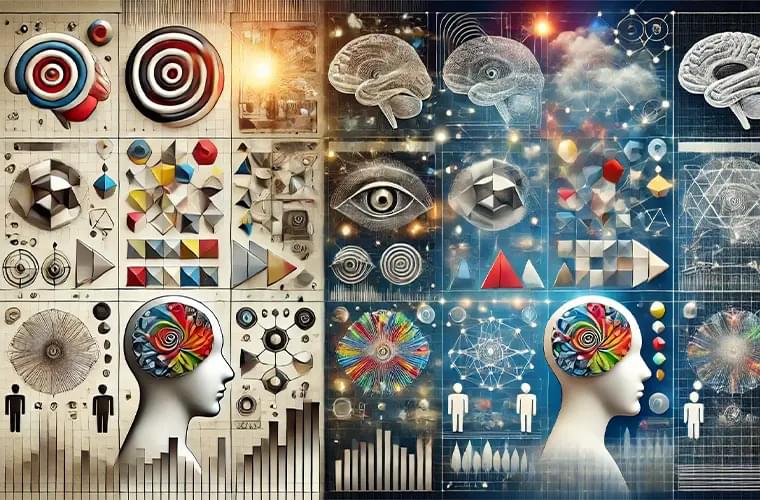A new study shows that even today’s most advanced AI vision-language models can’t compare with human comprehension capabilities.



A way to re grow new parts, perfect DNA match, eventually? Will take Agi / ASI to realize full potential, we ll see.
For this, the researchers have created a compact bioprinter to develop biological tissues with microfilament structures. He is now working to bring this technology to market.
“Our aim is to create human tissue models for high-throughput drug screening and other applications,” Liu said.
The human body is composed of various tissues, each with specific structures and functions. These tissues, like muscles, tendons, connective tissue, and nervous tissue, exhibit organized cellular arrangements. This organization is crucial for their proper functioning.
Scientists have developed a new material: an ultra-thin film that can absorb over 99% of electromagnetic waves.
The Korea Institute of Materials Science (KIMS) states it to be the “world’s first ultra-thin film composite material capable of absorbing over 99% of electromagnetic waves.”
This material is less than half a millimeter thick, but it can effectively shield against a wide range of frequencies, including those used by 5G, 6G, Wi-Fi, and autonomous vehicle radar.

Thanks to an algorithm created by an Idaho State University professor, the way engineers, doctors, and physicists tackle the hard questions in their respective fields could all change.
Emanuele Zappala, an assistant professor of mathematics at ISU, and his colleagues at Yale have developed the Attentional Neural Integral Equations algorithm, or ANIE for short. Their work was recently published in Nature Machine Intelligence and describes how ANIE can model large, complex systems using data alone.
“Natural phenomena–everything from plasma physics to how viruses spread–are all governed by equations which we do not fully understand,” explains Zappala. “One of the main complexities lies in long-distance relations between different data points in the systems over space and time. What ANIE does is it allows us to learn these complex systems using just those known data points.”
Oh, and it’ll need the total current US power output.

Is AI going to take your job? Here’s what Nvidia CEO Jensen Huang told Bollywood star Akshay Kumar.
Read more on the chip giant’s partnerships with the biggest Indian corporates, including Ambani’s Reliance, announced at Nvidia’s AI summit in Mumbai.
Nvidia Corp.’s Jensen Huang struck a partnership with Asia’s richest man, Mukesh Ambani, to build out artificial intelligence infrastructure and spur the technology’s adoption in the world’s most populous country.

China has just launched the world’s first autonomous flying taxis, cutting a 1-hour drive down to just 7 minutes!
These eVTOL (electric Vertical Take-Off and Landing) aircraft feature 16 propellers and carry two passengers up to 30–40 km. They offer a thrilling glimpse into the future of urban transport. Each pilot-free flight is safely monitored from a high-tech command center.
What do you think about this? ☝️
Accumulation of senescent cells drives aging and age-related diseases. Senolytics, which selectively kill senescent cells, offer a promising approach for treating many age-related diseases. Using a senescent cell-based phenotypic drug discovery approach that combines drug screening and drug design, we developed two novel flavonoid senolytics, SR29384 and SR31133, derived from the senolytic fisetin. These compounds demonstrated enhanced senolytic activities, effectively eliminating multiple senescent cell types, reducing tissue senescence in vivo, and extending healthspan in a mouse model of accelerated aging. Mechanistic studies utilizing RNA-Seq, machine learning, network pharmacology, and computational simulation suggest that these novel flavonoid senolytics target PARP1, BCL-xL, and CDK2 to induce selective senescent cell death. This phenotype-based discovery of novel flavonoid senolytics, coupled with mechanistic insights, represents a key advancement in developing next-generation senolyticss with potential clinical applications in treating aging and age-related diseases.
LJN and PDR are cofounders of Itasca Therapeutics, developing senotherapeutics for aging and age-related diseases. LJZ, LJN, PDR and the University of Minnesota have filed a provisional patent on the application of flavonoid analogs, including SR29384 and SR31133, as a strategy to treat age-related diseases.
Joscha Bach, a prominent cognitive scientist and AI researcher, explores the essence of artificial intelligence and consciousness. Bach elaborates on the history and philosophical underpinnings of AI, tracing its roots from Aristotle to contemporary deep learning. He discusses the current challenges and limitations in machine learning, particularly in achieving human-like understanding and consciousness.
Bach raises critical questions about the alignment of AI with human values and the feasibility of building systems smarter and more ethical than humans. He delves into the nature of consciousness, proposing that it is not merely a computational process but a fundamental aspect of how minds perceive and interact with the world. Bach also addresses the potential and risks of advanced AI, emphasizing the need for ethical considerations and a deeper understanding of consciousness to guide future developments.
Created by Protocol Labs and co-curated by Foresight Institute, LabWeek Field Building gathered leading individuals and teams from frontier science to drive progress. The weeklong conference took place at Edge Esmeralda, a pop-up event city in Healdsburg, CA, from June 10–16, 2024. For more info on LabWeek Field Building, go to https://www.labweek.io/24-fb.
Follow Joscha Bach.
Website: https://www.bach.ai.
X: / plinz.
Follow Protocol Labs.
Website: https://www.protocol.ai.
X: https://www.x.com/protocollabs.
LinkedIn: / protocollabs.